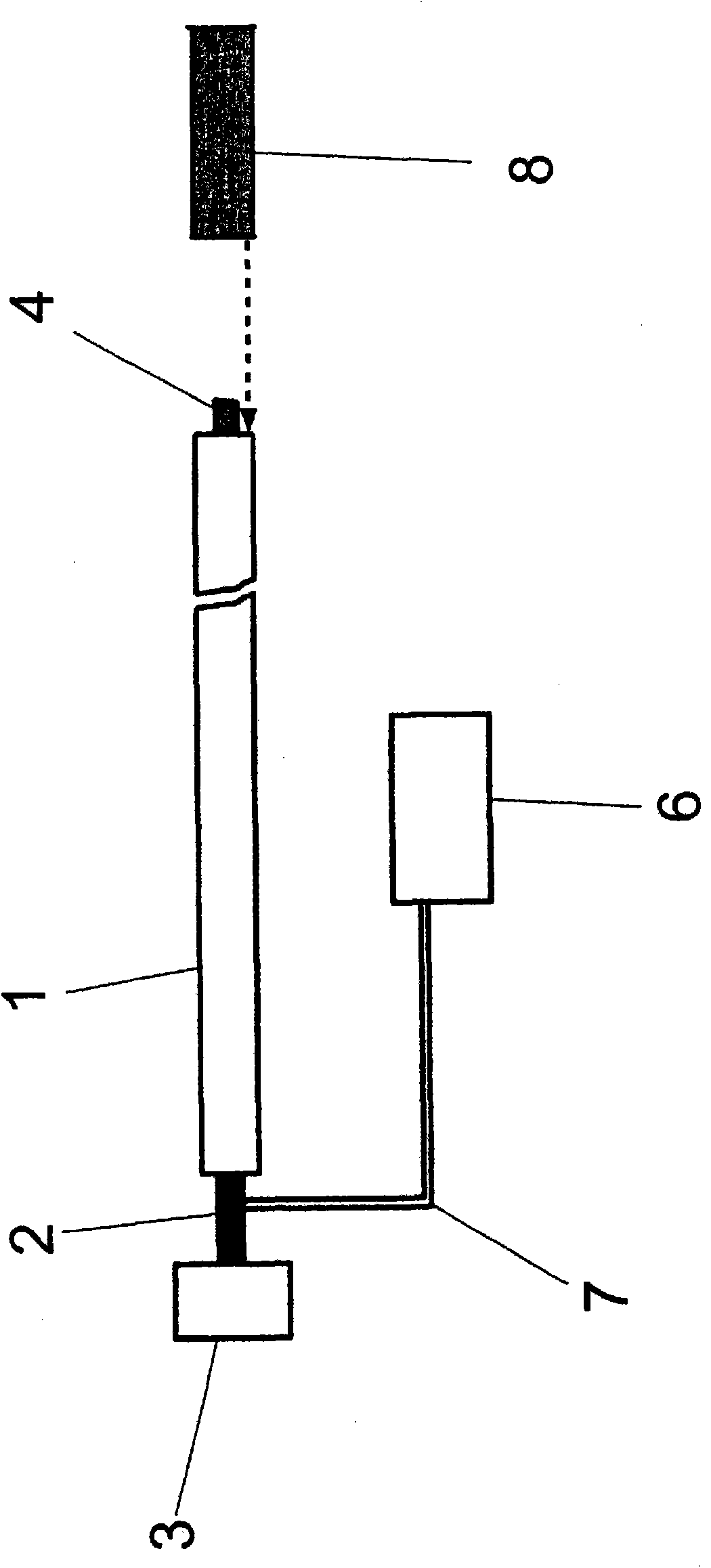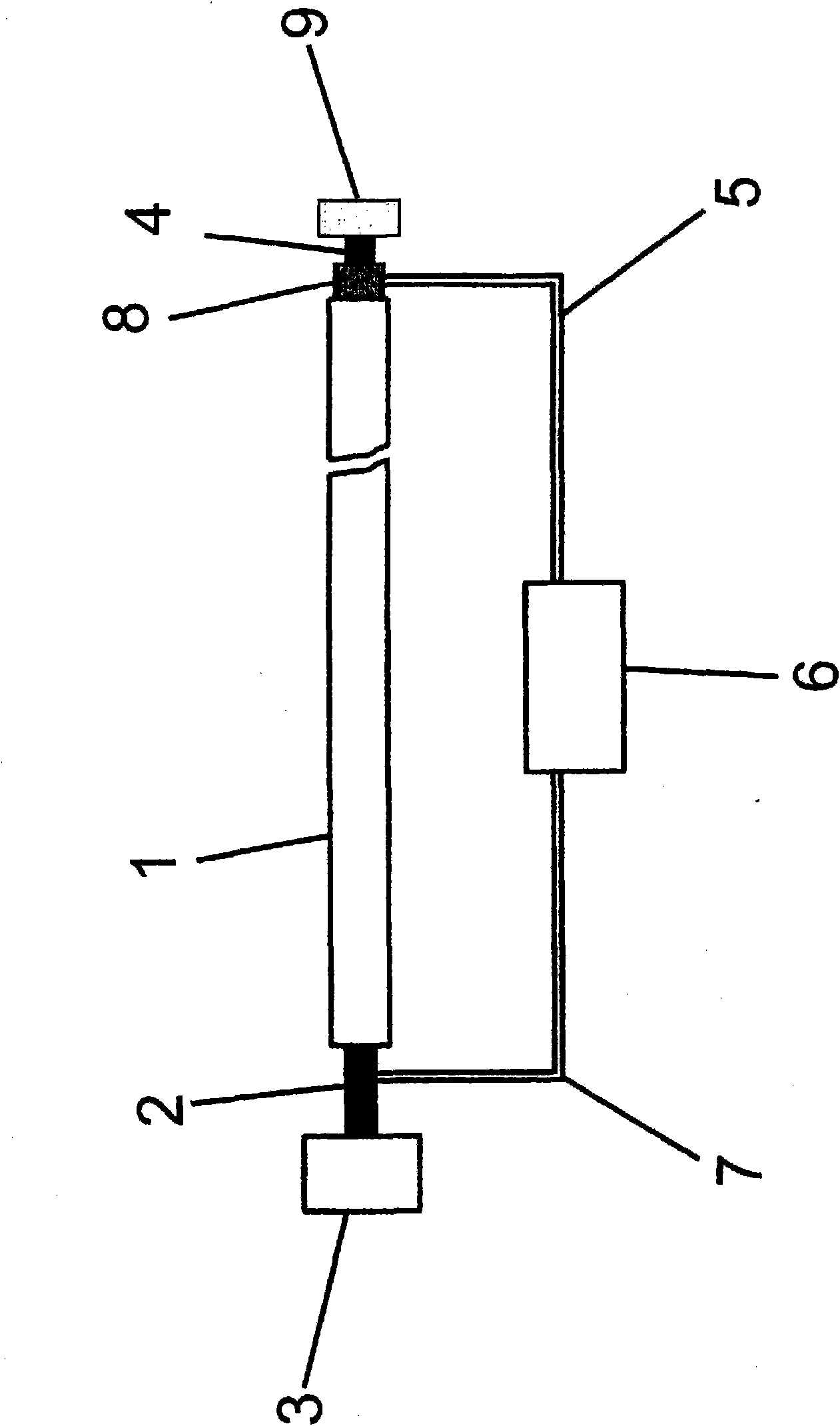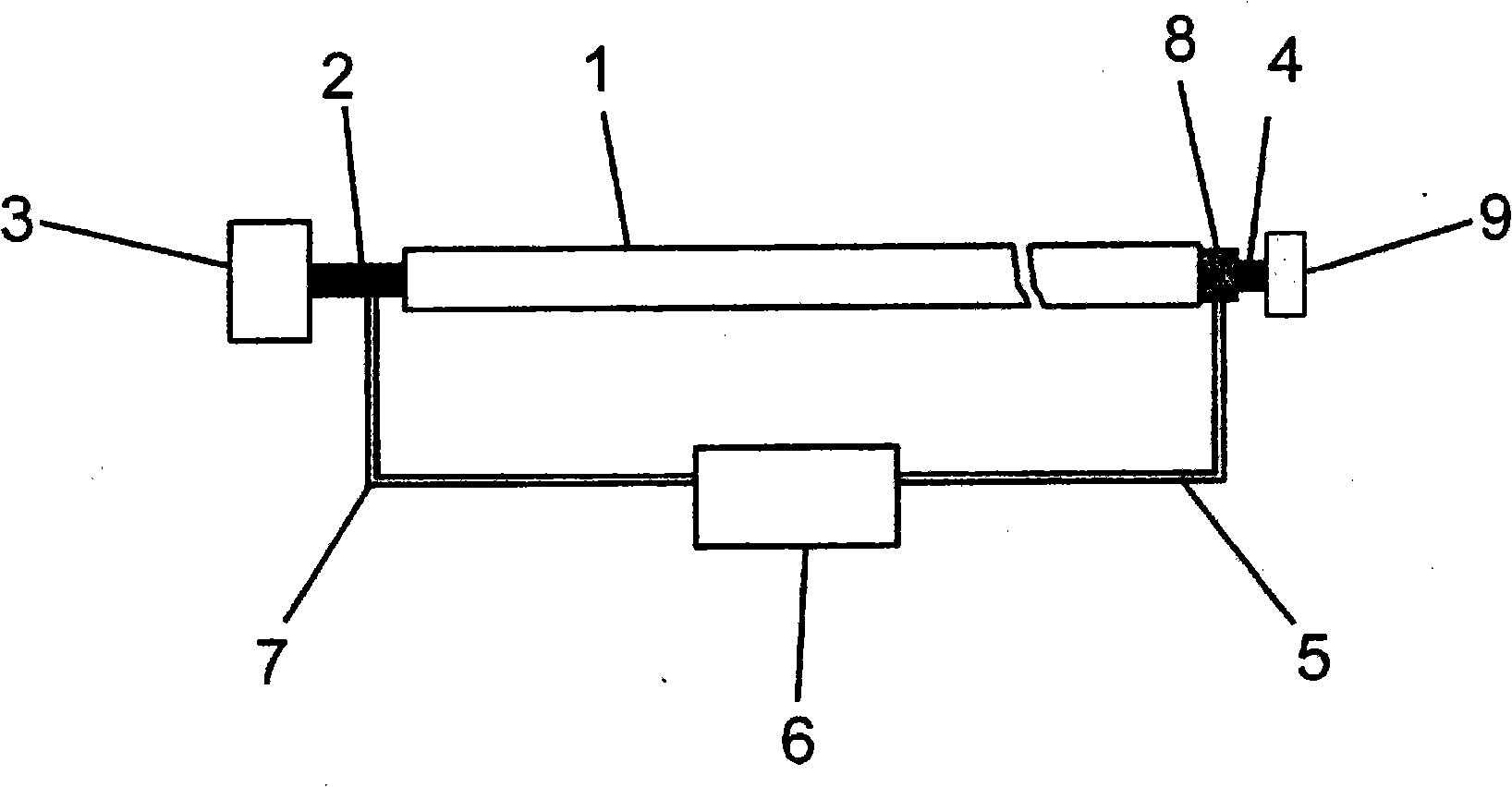Method and device for calibrating acceleration and force sensors
A force sensor and sensor technology, applied in the testing/calibration of speed/acceleration/shock measurement equipment, speed/acceleration/shock measurement, measuring devices, etc., can solve problems such as limitations and reproducible wear
- Summary
- Abstract
- Description
- Claims
- Application Information
AI Technical Summary
Problems solved by technology
Method used
Image
Examples
Embodiment Construction
[0036] figure 1 A device for calibrating an acceleration sensor is shown. The device comprises a Hopkinson rod 1 in the form of a metal cylindrical rod having a length of 2 meters and a diameter of 20 mm. A piezo actuator 2 is connected by positive fit to the left-hand origin of the upper stem of the Hopkinson rod 1 . A cylindrical metal balance weight 3 with a diameter of 50 mm and a length of 30 mm is adhesively bonded to the actuator 2 . The sensor 4 to be calibrated is mounted at the right-hand end of the rod. The reference sensor system 8 is in the form of a laser. The open-loop and closed-loop control electronics control the piezoelectric actuator 2 via a control line 7 .
[0037] figure 2A device for calibrating a force sensor is described. The device comprises a Hopkinson rod 1, generally in the form of a metal cylindrical rod, having a length of 2 meters and a diameter of 20 mm. A piezo actuator 2 is connected by positive fit to the left-hand origin of the upp...
PUM
| Property | Measurement | Unit |
|---|---|---|
| length | aaaaa | aaaaa |
| thickness | aaaaa | aaaaa |
| diameter | aaaaa | aaaaa |
Abstract
Description
Claims
Application Information
 Login to View More
Login to View More - R&D
- Intellectual Property
- Life Sciences
- Materials
- Tech Scout
- Unparalleled Data Quality
- Higher Quality Content
- 60% Fewer Hallucinations
Browse by: Latest US Patents, China's latest patents, Technical Efficacy Thesaurus, Application Domain, Technology Topic, Popular Technical Reports.
© 2025 PatSnap. All rights reserved.Legal|Privacy policy|Modern Slavery Act Transparency Statement|Sitemap|About US| Contact US: help@patsnap.com



